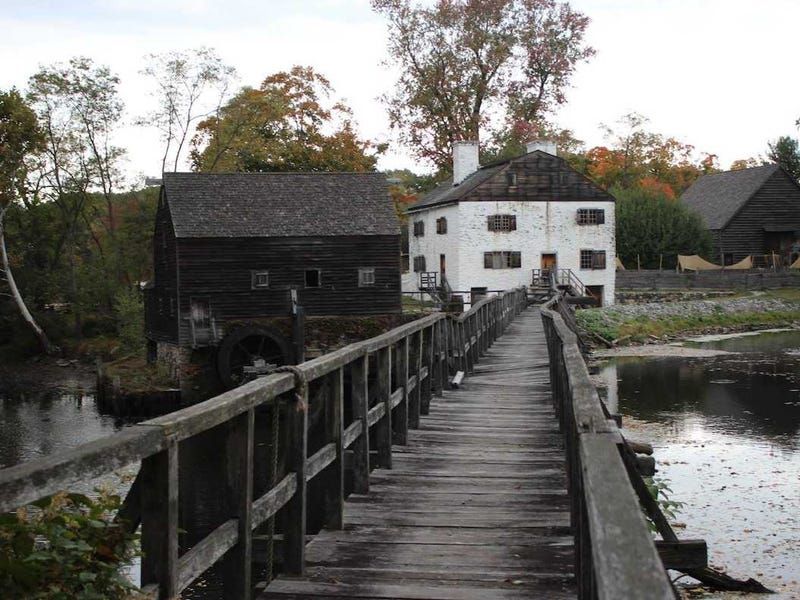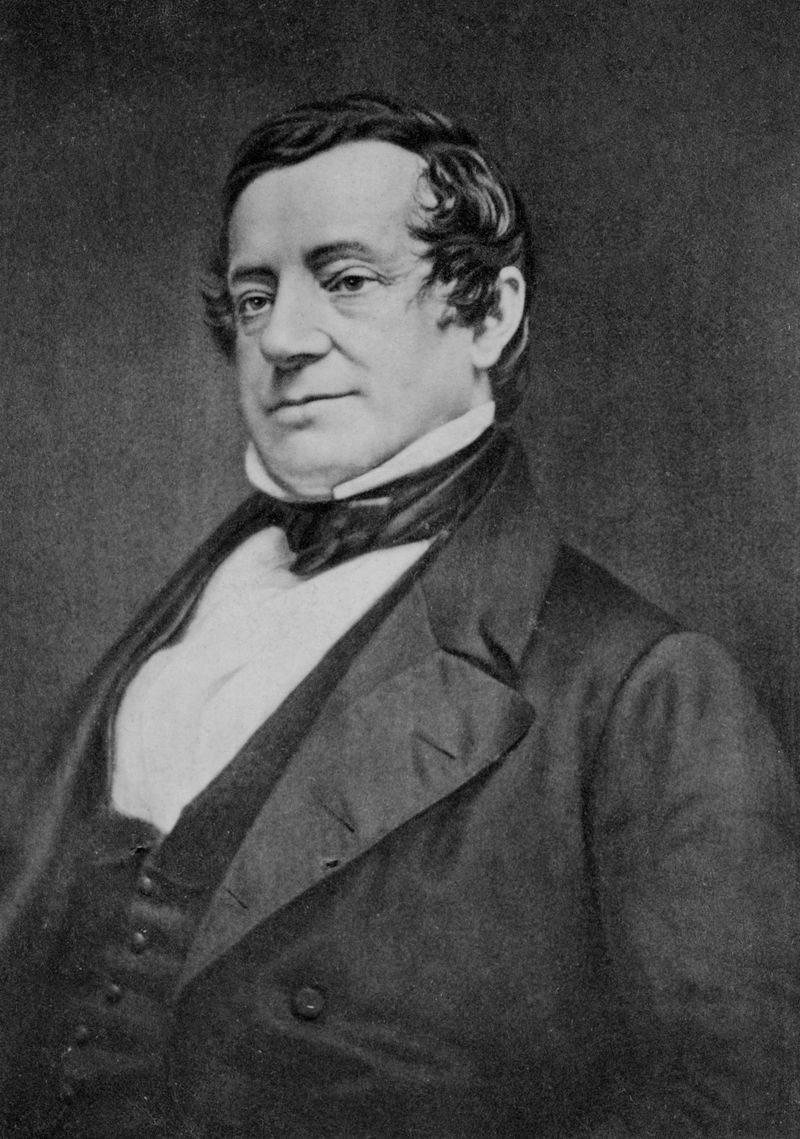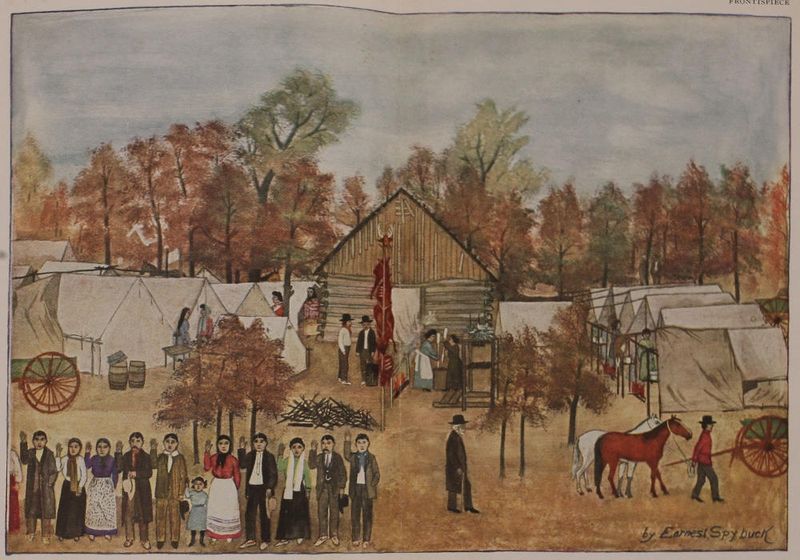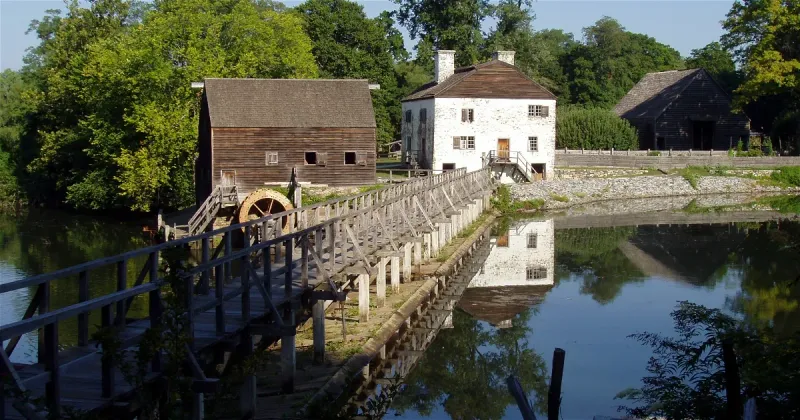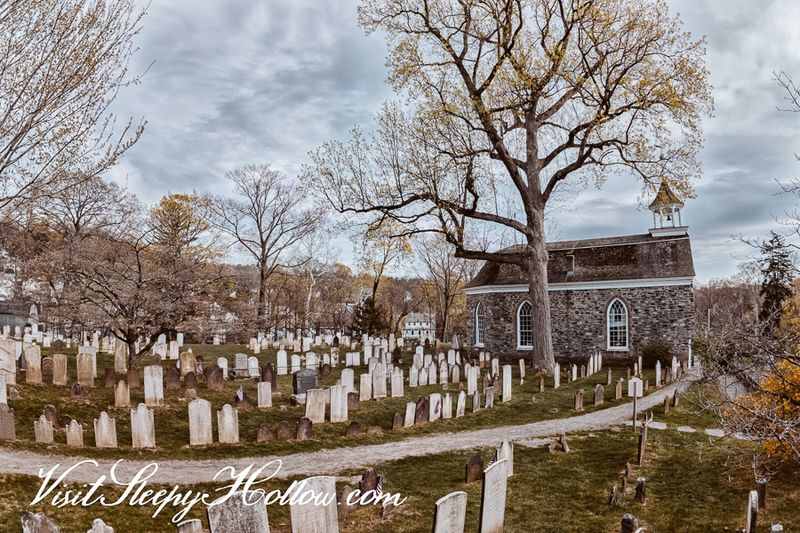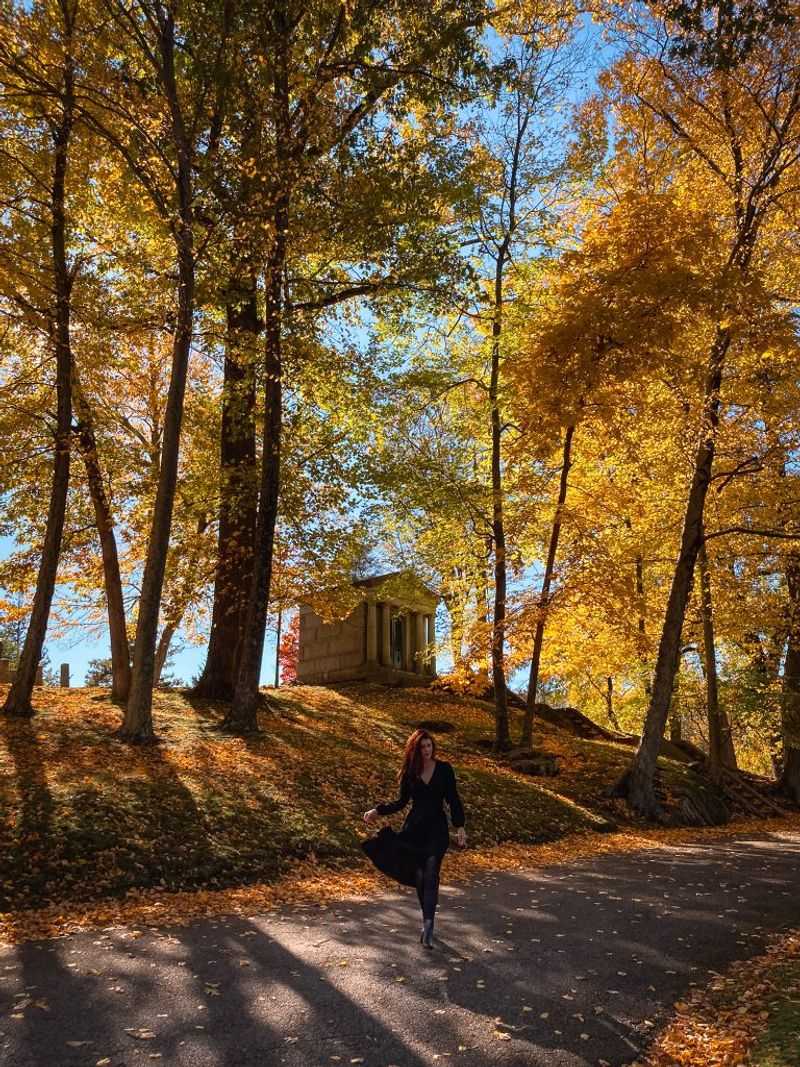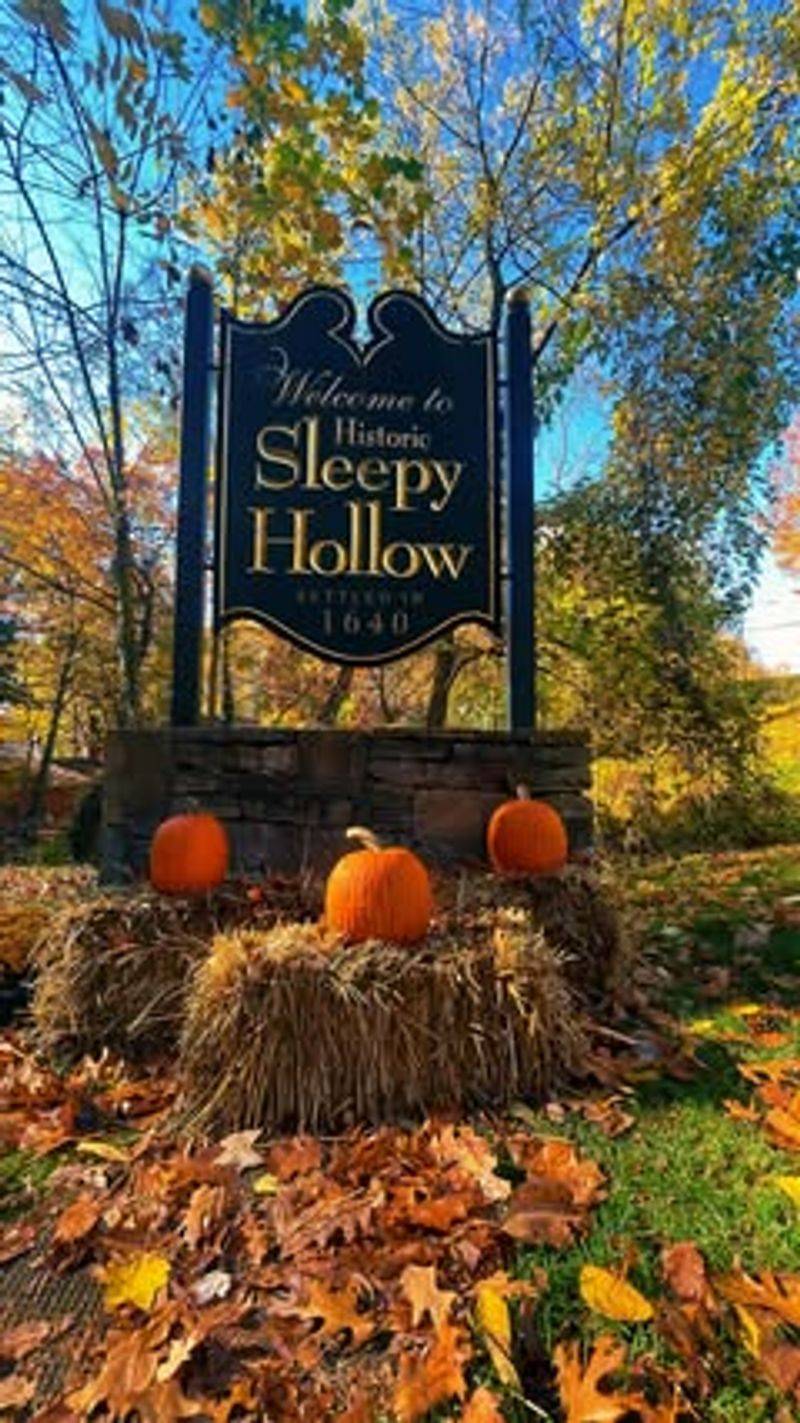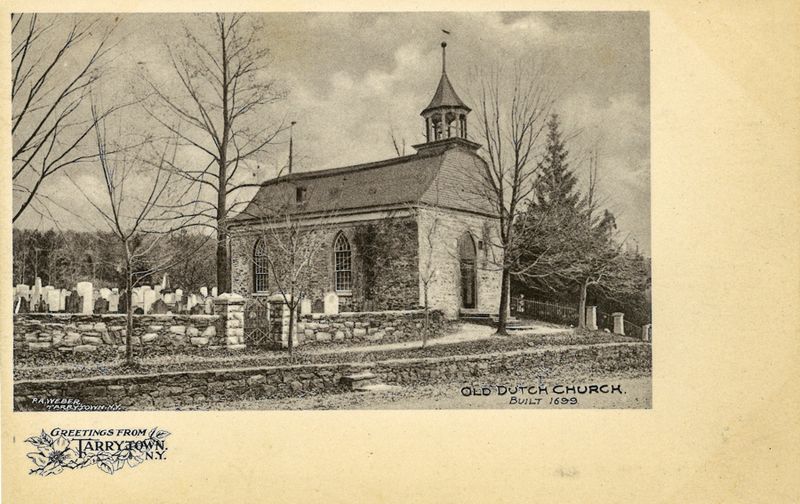Sleepy Hollow isn’t just a creepy story you read around Halloween. This real village in New York State became famous because of Washington Irving’s spooky tale about a headless horseman. Today, thousands of visitors come each year to walk the same streets and trails that inspired one of America’s most iconic ghost stories.
1. It’s real, not purely fictional
Plenty of people believe Sleepy Hollow exists only in storybooks, but that’s simply not true. This actual village sits in Westchester County, New York, and has real streets, homes, and businesses.
Residents live normal lives here, going to school, working jobs, and shopping for groceries. The village embraces its spooky reputation, but daily life remains surprisingly ordinary.
You can visit anytime, walk around freely, and see for yourself that Sleepy Hollow is as real as any other American town. Fiction and reality blend together here in fascinating ways.
2. Location matters
Geography plays a big role in Sleepy Hollow’s story. The village rests about 20 miles north of New York City, making it an easy day trip for urban explorers.
Sitting on the eastern bank of the Hudson River gives the area stunning water views and misty mornings that feel mysterious. This riverside position helped create the foggy, eerie atmosphere Irving described in his writing.
The proximity to Manhattan means you can experience small-town charm without traveling far from the city. Train connections make visiting simple, and the scenic Hudson Valley surroundings add natural beauty to the historical intrigue.
3. Name change history
Originally, this village went by the name North Tarrytown, which sounds pretty ordinary. For over a century, residents used that practical, unglamorous title for their hometown.
Everything changed in 1996 when the village officially renamed itself Sleepy Hollow. This decision wasn’t random but a smart move to embrace the area’s famous literary connection and boost tourism.
The name change sparked debate among locals, with some loving the spooky branding and others preferring the traditional name. Ultimately, the new identity stuck, transforming the village into a recognizable destination that draws visitors from around the world seeking Halloween thrills.
4. Literary origins: Washington Irving and his tale
Washington Irving published The Legend of Sleepy Hollow back in 1820, creating an instant American classic. His short story used real locations from this region, weaving actual landscapes into his fictional narrative.
Irving knew the area well from personal visits and drew inspiration from the rolling hills, dark forests, and winding roads. The story’s setting felt authentic because he based it on places he’d actually seen and explored.
This blend of real geography and imaginative storytelling helped make the tale feel believable and frightening. Irving’s writing turned a quiet riverside community into the backdrop for one of literature’s most enduring ghost stories.
5. Folklore meets fact
Irving didn’t invent everything from scratch when writing his famous tale. Local residents already shared ghost stories and supernatural legends long before he arrived with his notebook.
The Headless Horseman concept came from these regional folk tales, which Irving cleverly adapted and polished for his story. He listened to locals describe strange sightings, mysterious sounds, and unexplained events in the surrounding woods.
By combining genuine folklore with his creative imagination, Irving created something that felt both familiar and fresh. The story resonated because it grew from real traditions and beliefs already circulating in the community, not just pure fantasy.
6. Historic roots go deep
Long before European ships arrived, Native Americans called this land home. The Wecquaesgeek band of the Munsee Lenape people lived here, fishing the river and hunting the forests for generations.
These indigenous communities established trails, settlements, and sacred sites throughout the region. Their presence shaped the landscape and left cultural marks that predated colonial influence by centuries.
Understanding this Native American history adds important context to Sleepy Hollow’s story. The land holds layers of human experience stretching back far beyond Irving’s tale or Dutch colonization, reminding visitors that history runs deeper than any single legend.
7. Also Dutch and colonial heritage
Dutch settlers arrived in the 1600s, bringing their language, architecture, and customs to the Hudson Valley. They built impressive manor houses like Philipsburg Manor, which still stands today as a museum.
These colonial structures showcase distinctive Dutch building styles with their stone walls and steep roofs. The settlers established farms, trading posts, and communities that shaped the region’s character for centuries.
Walking through Sleepy Hollow today, you’ll notice this Dutch influence in building designs and historical markers. The blend of Native American, Dutch, and later English colonial heritage creates a rich cultural tapestry that makes the village historically significant beyond its spooky reputation.
8. Key historic landmark: The Old Dutch Church
Built in the 17th century, the Old Dutch Church stands as Sleepy Hollow’s most iconic historical structure. This ancient building appears directly in Irving’s story, where the Headless Horseman supposedly rides through its cemetery.
The church’s weathered stone walls and old graveyard create an genuinely eerie atmosphere, especially during foggy evenings. Many headstones date back hundreds of years, including some belonging to people Irving might have known.
Visitors can tour the church and cemetery, seeing firsthand the location that inspired literature’s most famous ghost chase. The building remains remarkably well-preserved, offering a tangible connection to both colonial history and literary legend.
9. The story’s location is approximate
Irving described his tale happening in a secluded glen near Tarry Town, using somewhat vague geographical references. He never provided exact street addresses or precise location markers for events in his story.
This deliberate haziness means modern visitors can’t pinpoint exactly where Ichabod Crane supposedly rode or where the Horseman appeared. Irving blended multiple real locations with fictional elements, creating an atmospheric setting rather than a documentary map.
Today’s Sleepy Hollow embraces this ambiguity, with various sites claiming connections to the story. The imprecise geography actually adds to the legend’s mystery, letting imagination fill the gaps Irving intentionally left open.
10. Haunted town and tourism status
Thanks to Irving’s story, Sleepy Hollow transformed into America’s premier Halloween destination. Every October, the village swells with tourists seeking spooky experiences and ghost tours.
Special events include haunted hayrides, cemetery walks, and theatrical performances of the Headless Horseman tale. Local businesses decorate elaborately, and the entire village embraces its supernatural reputation with enthusiasm.
Tourism provides significant economic benefits, supporting shops, restaurants, and hotels throughout the region. The village successfully turned its literary legacy into a thriving industry while maintaining historical authenticity. Visitors can enjoy scares and thrills while also learning genuine history about colonial America.
11. Nature and scenic appeal
Beyond ghost stories, Sleepy Hollow offers genuine natural beauty that attracts nature lovers and hikers. The Hudson River provides stunning waterfront views, especially during sunrise and sunset.
Historic trails wind through the area, including sections of the old aqueduct system that once supplied New York City with water. These paths offer peaceful walks through forests and along ridgelines with panoramic valley views.
The village setting feels tranquil and charming, with tree-lined streets and well-maintained parks. Many visitors come simply to enjoy the scenery and small-town atmosphere, appreciating the area’s beauty without any interest in supernatural legends or spooky tales.
12. More than a spooky story
While the Headless Horseman grabs headlines, Sleepy Hollow’s importance extends far beyond one ghost tale. The village represents crucial chapters in American colonial history, showing how diverse cultures blended in early America.
Architectural preservation efforts maintain buildings that demonstrate Dutch, English, and early American construction techniques. The area illustrates land settlement patterns, agricultural development, and river commerce that shaped the young nation.
Irving’s writing itself holds cultural significance, helping establish American literature as distinct from European traditions. Sleepy Hollow stands as a living museum where visitors can explore multiple layers of American heritage, from indigenous roots through colonial times to literary achievement.

